There are ten species in the Sulidae bird family which includes Gannets and Boobies. During my various birding trips I have seen 7 of them: Red Footed Booby, Brown Booby, Peruvian Booby, Nazca Booby, Masked Booby, Northern Gannet and Cape Gannet. The three species I had not seen were Australasian Gannet, Abbott’s Booby and Blue Footed Booby. The Australasian Gannet is found in Australia and New Zealand. If I had made it a point to find one during my visit to Australia in 2003, I probably could have. The Abbott’s Booby has a very small population and a limited range. I have never been close and do not expect to ever see one. BUT Blue Boobies are common around the Puerto Vallarta area and seeing one was high on my list. My second day in Mexico would be the day. Greg Homel picked me up early at the hotel – packed and ready to go as we would be moving to a new location, but first on the agenda was a boat trip to a National Park, Islas Marietas, in Nayarit State – north of Puerto Vallarta.

Islas Marietas is made of several small islands and two larger ones, Isla Larga and Isla Redonda, the ones we would be visiting after maybe a 20 minute boat ride across the open but pretty calm sea. Brown and Blue Footed Boobies, Magnificent Frigatebirds and some other species are abundant on the two large islands and some breed there. Seeing these birds was guaranteed and there was a chance to find Red Billed Tropicbirds, another potential lifer. The waters around the uninhabited islands are popular with snorkelers and several outfitters bring hordes of them to the protected waters. Venturing onto the islands themselves is not permitted.
It was an awesome trip in perfect weather with lots of sun and no wind. Greg knew the operator of the boat well and together they positioned and repositioned the boat continuously for the best views and great photos. The trip was not species rich number wise, only 17 seen, but what great birds and spectacular views and photo ops!! Most impressive were the dozens of Blue Footed Boobies and Magnificent Frigatebirds with fewer but also impressive Brown Boobies. There were also numerous Black and Turkey Vultures and we picked out a single Zone Tailed Hawk in one group and then watched it take a lizard for a meal. On the rocks at the base of the island, we had a Snowy Egret and a Wandering Tattler foraging for food. All of these birds except the Turkey Vulture were new birds for the year and the Blue Footed Booby was the only lifer and life photo. I wish I could say it was Year Bird #1000 for 2023, but that would come a little later. Even though we were in a boat and the birds were on the island cliffs, they often were not very high off the water and we got quite close and especially enjoyed courtship displays between the boobies. With telephoto lenses and the sun behind us and thus on these fascinating subjects, there were lots of photos.
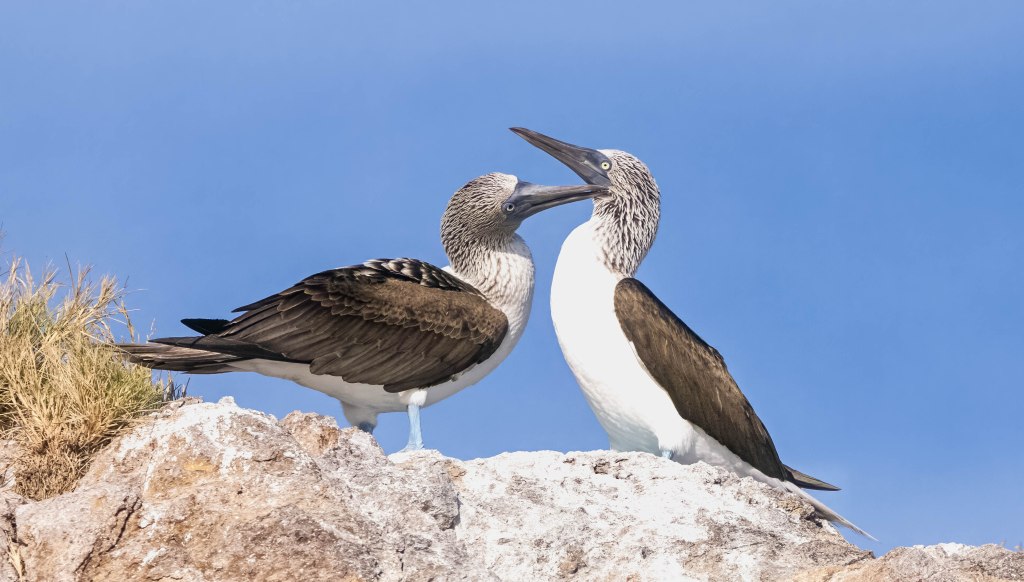



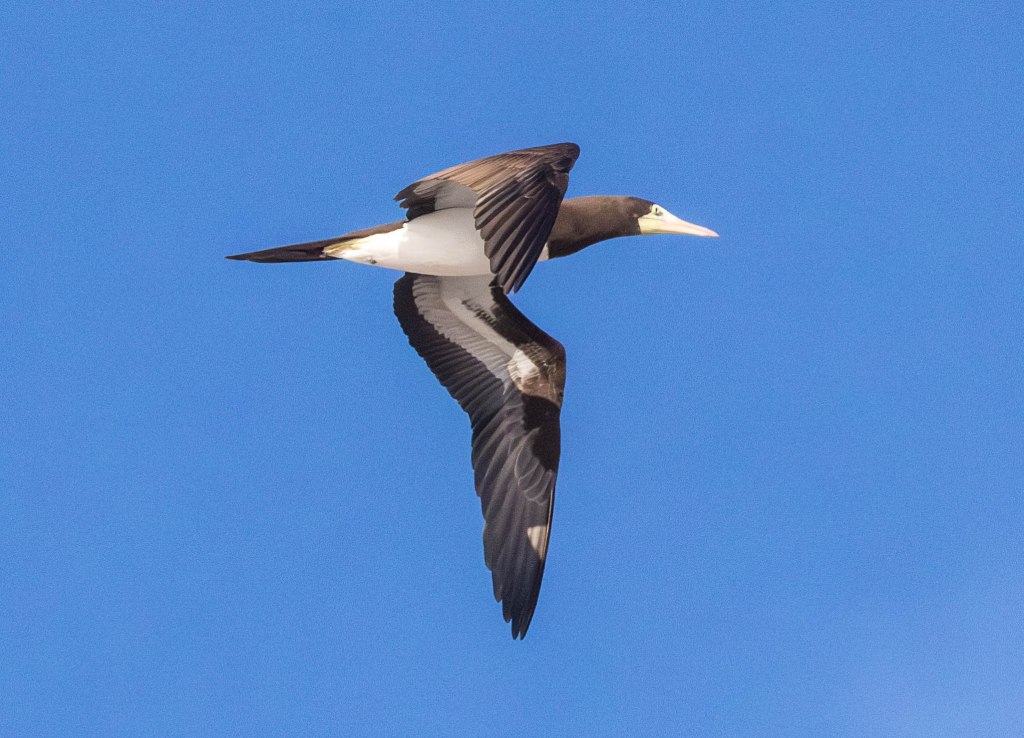






Another new bird for the year (#994) was Gray Breasted Martin. Martins, Swallows and Swifts are notoriously difficult to capture in a good picture – unless you catch them roosting. And this was the case now as they nested/roosted in crags in the cliffs and thus I was able to get an ok photo.

The boat ride back was smooth and pleasant and the two hours spent at the islands could not have been better. We would spend the next hour and a half birding areas near the coast in the State of Nayarit – Bahia de Banderas on the Ebird report. Many of the species were repeats from the previous day but we also added Common Black Hawk and Gila Woodpecker and a first look at Black Throated Magpie Jay – a lifer that we would see much better later. My year list was now at 996 species.


We continued northward not far from the coast, birding in Compostela including the Rio Boca de Chila (the mouth of the Chila River). Lots of new inland water oriented birds for the trip but I had seen most of them the previous day or elsewhere earlier in the year. Two new year birds were Sinaloa Crow and Happy Wren. I got photos of the former – a lifer – but would not get photos of the latter until later in the trip.
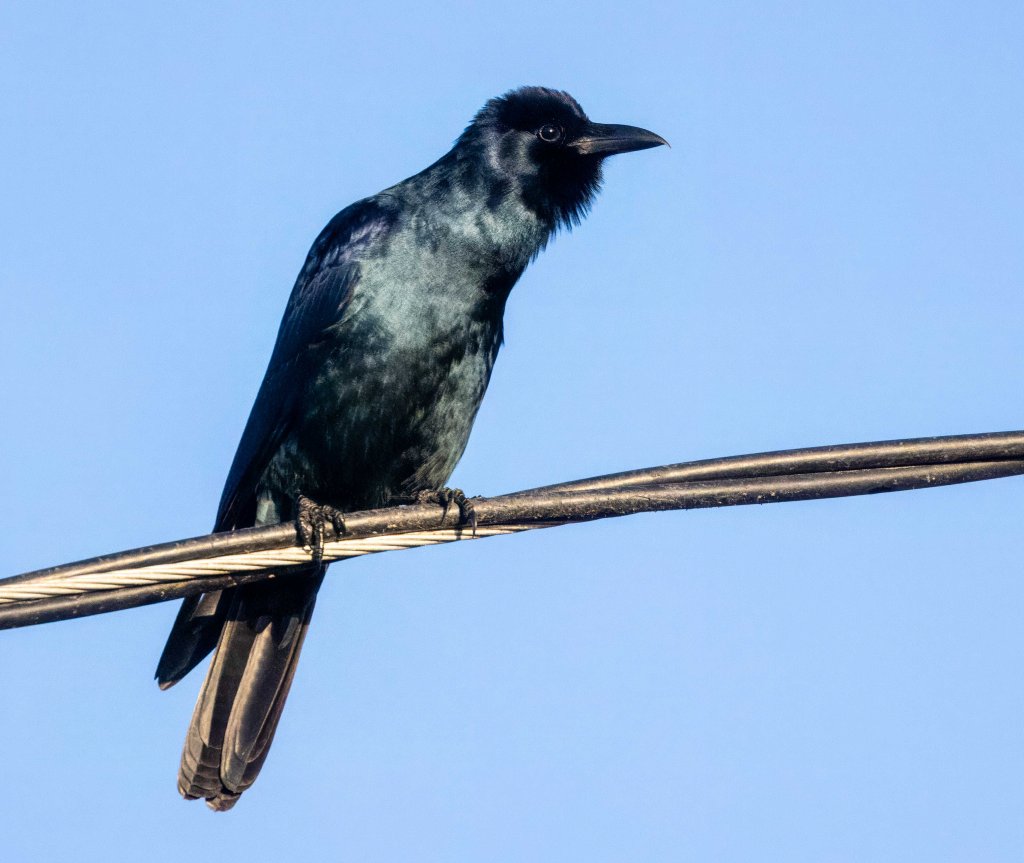

We drove into San Blas and had a super lunch at one of Greg’s favorite eateries – the Wala Wala Restaurant. Excellent shrimp and a fun time chatting with the owner. We would return the next day as well. After lunch it was to our hotel to check in and have a short rest.
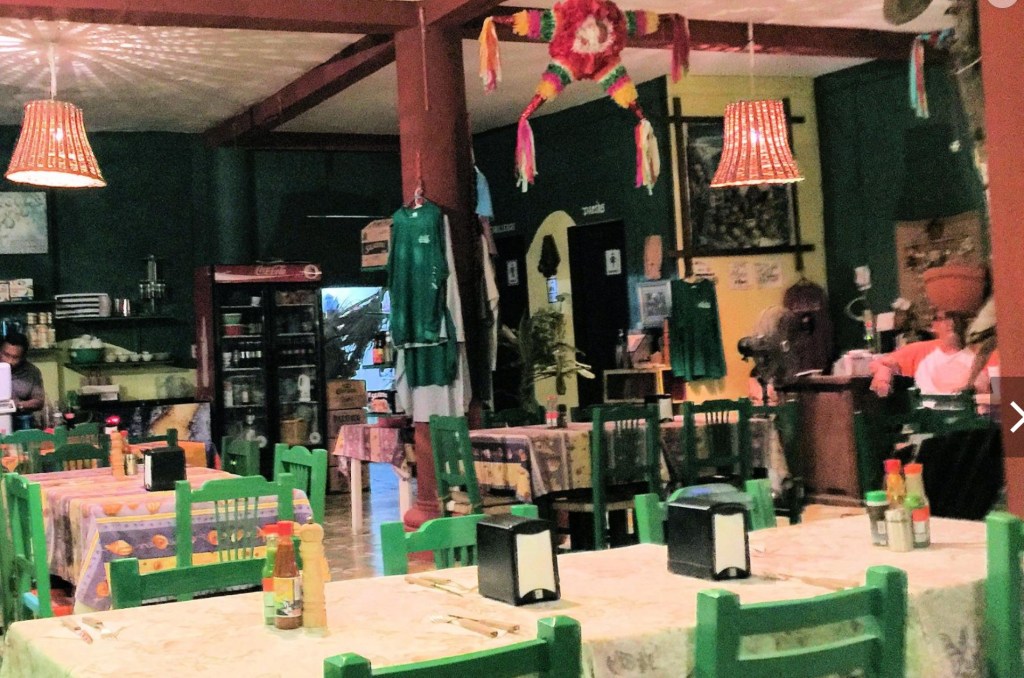
Leaving the hotel we headed to the Rio La Tovara where we would have another boat trip – now through the Mangroves. The first new bird on the river would be species number 1000 for the year – successful execution of the project, but hardly the end of the story. The previous day we had seen and heard numerous Yellow Warblers, a common species in breeding season near me in Washington. By all rights the Yellow Warblers we saw in the mangroves should be a separate species and as the first birds we saw there would have been the 1000th bird for the year. These “Mangrove Warblers” have a distinctly different range and utilize a distinctly different habitat from their more common relatives and are quite different in appearance with a striking cinnamon head. Maybe someday there will be a split – but not yet so the 1000th bird for the year may have been a Black Bellied Whistling Duck although it might instead have been a Least Bittern that I saw flying across the lagoon or possibly the Little Blue Heron that was perched on a snag seen at a distance or why not that Green Kingfisher that was buried among the mangroves, scoping out its next meal. The truth is I had not kept track of new year birds as we saw them and if I can’t count the Mangrove Yellow Warbler which was for sure the first bird seen, then I just don’t know. Most likely, though, it was a Mangrove Swallow as we saw many as we motored down the lagoon. Unfortunately, however, I did not get a photo of the Mangrove Swallow, so I am declaring the Green Kingfisher as the “unofficial official” 1000th species for 2023.


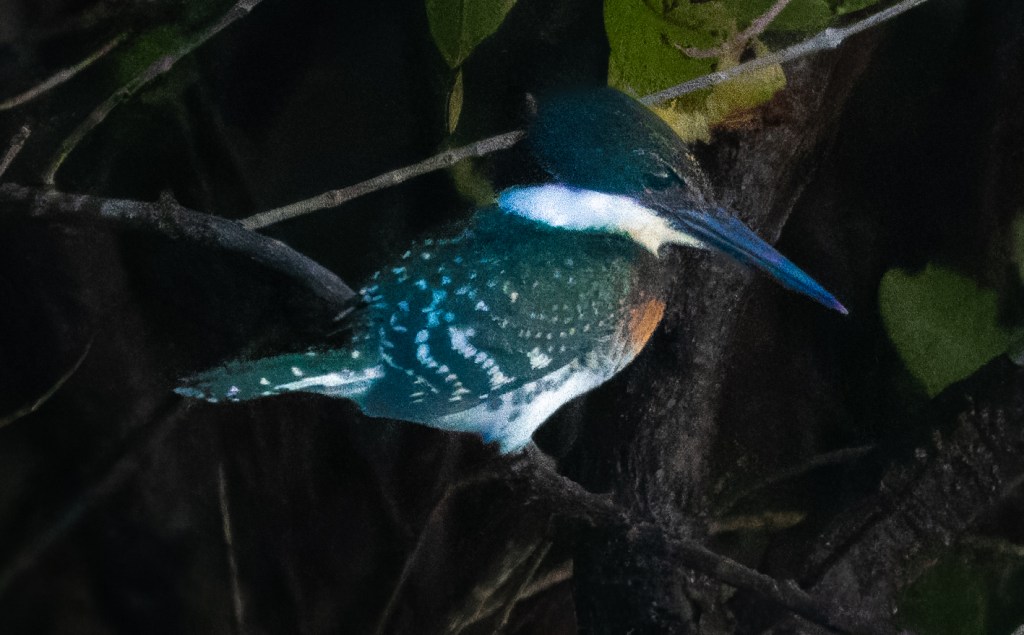
We worked our way down the lagoon and then into the mangroves with lots of species along the way. All told there would be 12 new species for the year, but only the last and most impressive was a new lifer for me (just wait) and it would be the only new life photo as well. By the end of the trip, my Mexican trip list would be at 114 species and counting. Some more photos from the boat trip.




I really have saved the best for last. The main reason to be at this beautiful place was to hopefully see a Northern Potoo – which would be new for the trip, new for the year, a world lifer and a new world photo and a really cool bird related to the nightjars and nighthawks. Potoos are famously known for blending in to the logs or poles or snags that they often choose for their perch. Depending on your view and whether it’s eyes are open or not, they can be almost impossible to see and they have such a small protruding bill that it is often buried in its head feathers. They are nocturnal insectivores but are often seen on day roosts. We did not see any for a long while and then we saw first one and then another and another – at least five in all. The boatmen were constantly shifting the position of the boat to line us up with the front of the Northern Potoos and as they shined the powerful spotlight on our quarry, we snapped away hoping for the “killer shot” with its bulging yellow eyes wide open ala Marty Feldman in “Young Frankenstein” (and other roles). We succeeded.
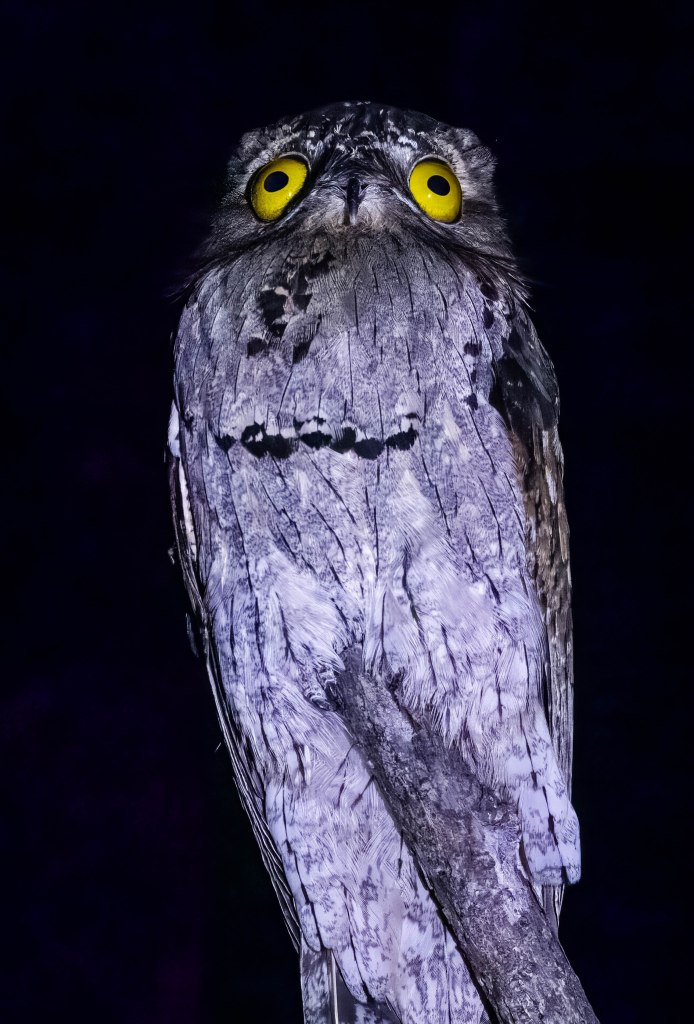
It had been a long, wonderful, bird filled, beautiful, successful and milestone achieving day. My 2023 year list was at 1011, and my World list was at 3259. I don’t know what my world photo list was but something around 1930. We headed back to San Blas and had really tasty and filling enchiladas at King Taco’s – wish we had this food in Edmonds. We would have another early start for more birding around San Blas tomorrow.
